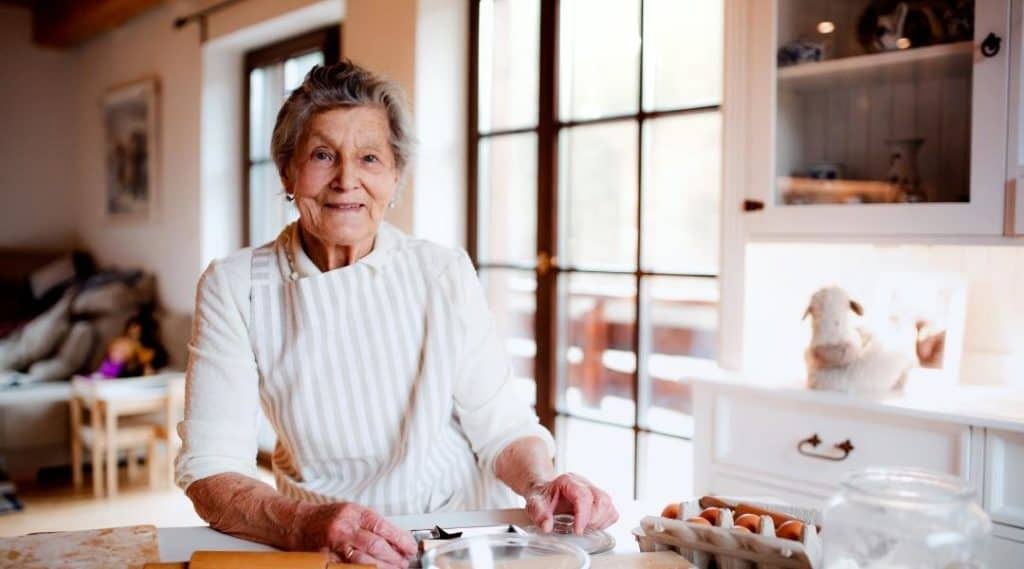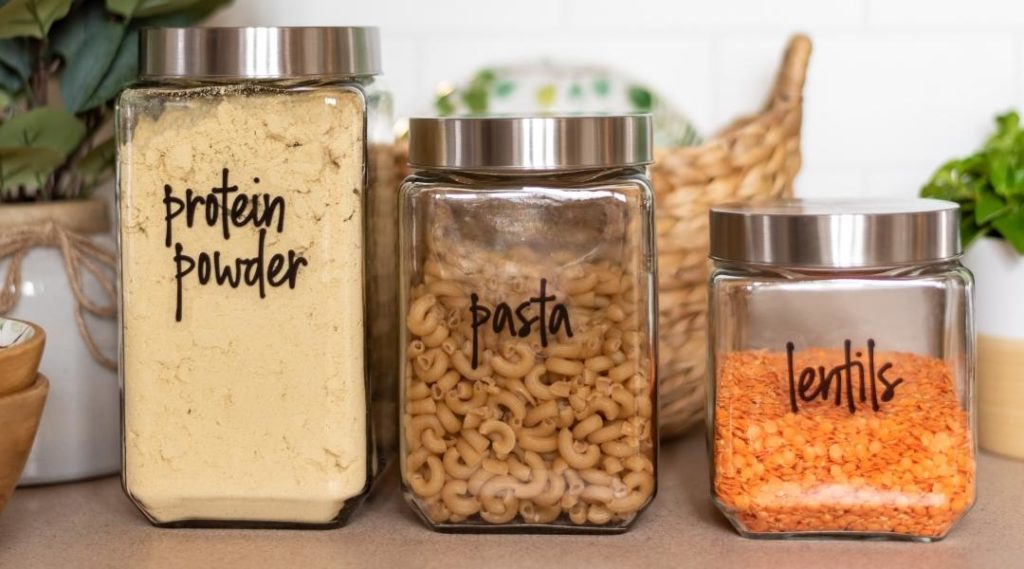These simple dementia home modifications are a great way to celebrate World Alzheimer’s Awareness Day – September 21 – a day to support greater awareness of how dementia and Alzheimer’s disease can affect not only those living with the disease but also those who care for them.
When setting up the home, making the modifications early in the disease process is key to these daily activities transferring into long term memory. Routine and consistency for everything in the home. Here are some easy things you can start establishing in your home, to help a loved one manage independently for longer and hopefully stay in the more successfully .

Daily use items in line of sight
To a person living with dementia, out of sight is literally out of mind for them as the disease progresses. Especially daily use items in the bathroom or kitchen are best to keep in a consistent visible place. Set your loved ones toothbrush, tooth paste, comb, deodorant – all together in one spot visible for their morning hygiene routine. In the kitchen you may want to keep a mug, small plate, favorite snack items in an easy to see spot. Occasionally removing a cupboard door or using clear acrylic baskets to contain items in an easy dementia home modification to allow your loved one more independence at finding items.
Create a walking flow
Often our homes are full of furniture, that you might have to walk around a coffee table or move around a certain piece of furniture to get to the next room. If at all possible, create a clear walking path throughout the home – free of furniture. As dementia progresses, furniture can become a safety hazard if not easily seen in peripheral vision. Sometimes choosing a bit smaller furniture pieces is helpful to allow easier movement through the home. Establishing a clear walking path, allows your loved one to commit a way to move through the house to their long term memory. Having a uninterrupted circuit is a great way for a loved one to manage dementia when anxious or the weather is too bad to go outside. This also sets up the home for future walker use, so you are not rearranging furniture late in the disease process.
Use Labels
A simple dementia home modification is to create visual labels for cupboards, drawers, closets can be helpful for a person living with dementia to know what is behind the door. Some of my clients have opened a cupboard, taken a photo and mounted that photo on the outside of cupboard for the loved one to easily see where plates or glasses are. Putting an image of a toilet on the bathroom door can be helpful if a door is closed. Taping photos of toothbrush, brushing hair, shaving, etc – can help a person better remember their morning hygiene routine.

Safely Store Items
You may want to early on, develop a plan for securing items safely away from your loved one. Having a locked medicine cabinet for medications and personal hygiene items that can be accidentally eaten or used improperly. If not easy to lock a cabinet, perhaps get a small toolbox that can be locked for the razors, shaving cream, toothpaste, etc that may no longer be safe for your loved one to use without supervision. In the kitchen, have a plan for moving sharp cooking knives, or preventing microwave door from opened to use metal objects in. Planning for these safety measures early on, makes them easy to implement as required.
Create a plan for mirrors & photos
Later in the disease process, mirrors can cause confusion for the loved one living with dementia, where they may think there is another person in the home. Mirrors can also cause sudden light or reflection changes that may startle someone living with dementia. Removing non-essential mirrors can be helpful. Cluster photos of people below line of sight while walking (such as on end table instead of a collage on a wall), for a similar reason. But having clusters of familiar faces and people is a great idea scattered throughout the home on a lower surface. On walls, have photos of landscapes, places they’ve travelled or worked are all great memory aids to have. Photos throughout the home also become an easy distraction conversation to point to and start a conversation about.
Every person’s journey with dementia is a unique journey. Some of these dementia home modification strategies are best to implement early on, so your loved one can get used to them. Some of these strategies are more helpful as the disease progresses. Although many people living with dementia maintain many of their physical abilitites, having a plan to simplify, unclutter and make the home environment easier to navigate and complete tasks is the overall goal. When you make some of these modifications, you decrease anxiety and frustration for your loved one. You promote independence longer. You can keep the home safer for them.
Curious what other dementia home modifications you can make? Jolyn’s home safety assessment will review over 243 elements of your home to help you better prepare for your loved one’s dementia.





